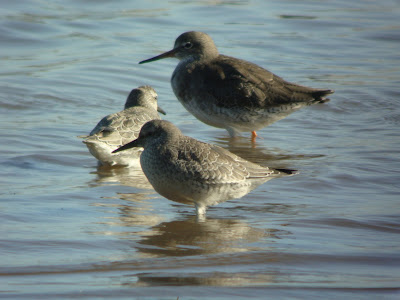This Lapland Bunting was one of the birds seen on a trip to Norfolk on Sunday with the Bedford RSPB Local Group. We knew a sizeable flock had been at Cley in recent days, but only managed to find a single bird – and we were lucky to spot that as it moved around, beautifully camouflaged, amongst the rocks and vegetation on the shingle bank.
Even though we were quite close, you only had to take your eyes off it for a couple of seconds and it was difficult to find again, especially when it decided to do its best impersonation of a pebble...
It was a good day for waders - large numbers of Black-tailed Godwits, plus Dunlin, Knot, Redshank, Ruff, Little Stint, Avocet, Grey Plover, Turnstone, Bar-tailed Godwit, and a rather grubby Spoonbill at Thornham. My favourite birds of the day, apart from our little camouflaged friend above, were the first Pink-footed Geese of the Autumn, an Arctic Skua in aerial combat with a Tern, and three Common Scoters bobbing up and down in the sea off Cley – yet another case of ‘ Now you see ‘em, now you don’t’.














